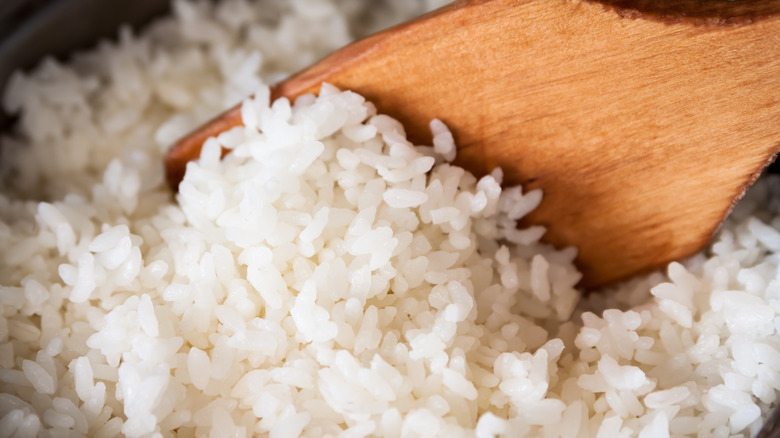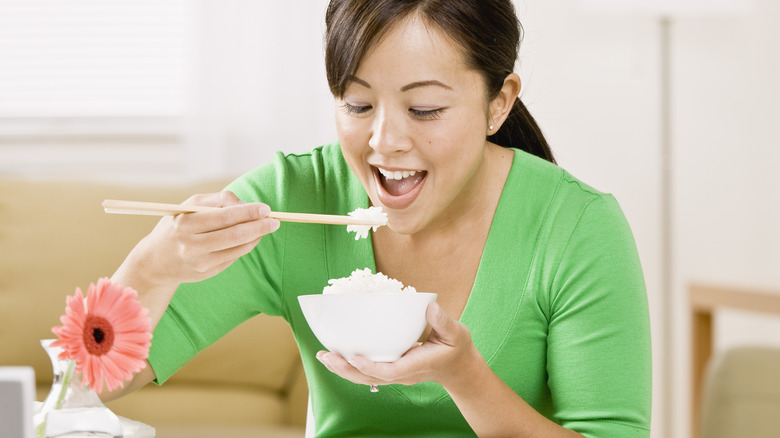Before You Throw Out That Undercooked Rice, Try Rehydrating It
Despie its simplicity, cooking rice to perfection can sometimes be ridiculously hard. When it is overcooked, the rice gets a bit gummy from the starches, and it clumps together. While some people like this consistency, you can fix it by leaving it uncovered to cook a little longer, getting rid of some of that excess moisture. You can also rinse and heat the rice in an oven at 350 degrees to dry it out just a little.
Undercooked rice is hard. It is not a satisfying texture, for rice at least. If you've erred on this side of the scale, it's not pleasant (or wise) to eat the results, but that doesn't mean you have to throw your crunchy rice in the trash. You can usually fix it simply by rehydrating the rice, which is easily done by adding a quarter cup of water to your pot, sealing the lid, and cooking over low heat. If this does not solve the problem after a few minutes, repeat.
Why it is never a good idea to consume undercooked rice
If the undesirable texture isn't enough to keep you from eating rice that hasn't been thoroughly cooked, there are a couple more reasons why you should avoid it.
First, eating raw rice can give you food poisoning. This happens when you eat rice containing Bacillus cereus (commonly found in soil) or other pathogens. The result is not pleasant, as you may experience abdominal pain, nausea, diarrhea, or vomiting. In older adults, food poisoning may require hospitalization, or it may even be fatal.
The other important reason to make sure you thoroughly cook your rice before eating has to do with digestion. Raw rice, like other whole grains, contains lectin, a protein that humans cannot digest. When consumed in large amounts, lectins can cause many of the same symptoms as food poisoning. Even worse, lectin can prevent your body from digesting other nutrients. Cooking effectively inactivates most lectins, making rice safe to eat.

